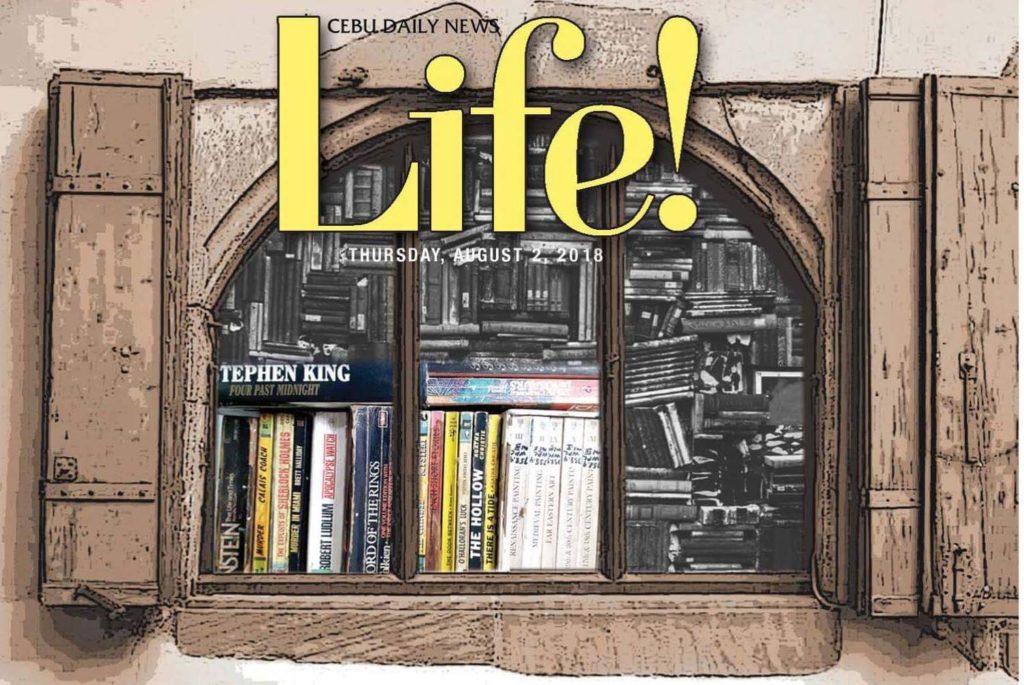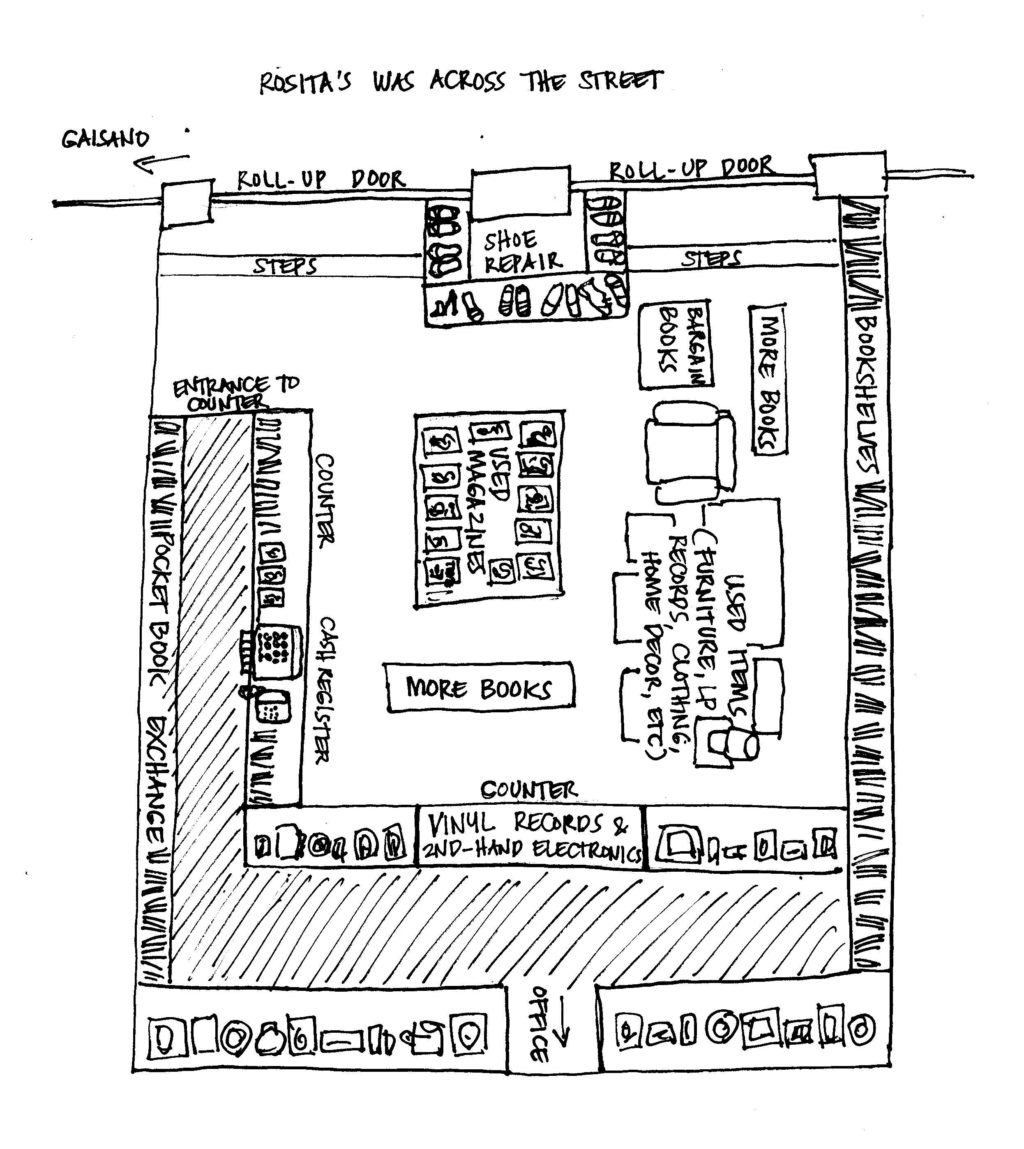
Composite image showing Joan Martinez Florido’s old books from Music House
JANE’S WALK
I HAVE never been to the Cebu Music House or Gaisano Super Bookstore. My earliest memory of downtown Cebu was the Gazini Plaza, where my mother bought me a copy of a Cinderella book for my seventh birthday and that made me a proud book owner for the very first time.
So it was a new experience for me when we walked last May 4 to trace the former locations of downtown Cebu’s “lost bookstores.”
It was not a spontaneous walk.
My friend Hendri Go, who started Cebu Literary Festival, introduced to me the movement that is Jane’s Walk, a series of citizen-led neighborhood walking tours.
It was inspired by Jane Jacobs, writer/urbanist/activist, who introduced ground-breaking ideas on how cities function, evolve and fail. She immortalized this in a book titled “The Death and Life of Great American Cities,” published in 1961.
Jane’s Walk happens on the first weekend of every May and for 2018, I believe, we were the only ones in
the Philippines to do it. (Feel free to correct me if there was any Jane’s Walk event held in Manila.)
Our walk brought us from Halad Museum on D. Jakosalem Street to the Cup n Saucer Restaurant on Pelaez Street. We did not discuss the Cebu Music House in depth as there was very little information about the place. But we were told though that the owners’ last names are Martinez and Florido.
Individually, the last names are familiar.
But what are the chances of knowing someone who has both last names?
Last March, I met a kind and gentle painter named Joan Martinez Florido, who is a member of the Portrait Artists’ Society of the Philippines, Inc. (PASPI).
I wrote a story about PASPI’s Babaye exhibit at the Cebu City Museum.
The day after the walk, I casually sent Joan a message on Facebook asking if she knew the owners.
Her reply sent chills down my spine.
“Yes, my Dad owned it.”

Joan’s sketch of the floor plan of the Music House
Her father’s name is Carlos Florido; her mother, Teresa Martinez.
“I miss that store. I loved it so much. You should have seen me when a new shipment of books came in,” added Joan, whose replies to the attempt of a pesky journalist of getting more information about the bookstore of her childhood seemed to excite her more than it annoyed her.
The store started out as a music house, hence the name.
Patrons eventually regarded it as a bookstore because they could buy and sell pre-loved or second-hand books at the store.
“My family has always been a bunch of book lovers. We collected old issues of National Geographic. My Dad came up with the idea of exchanging books so basically you were borrowing books for a small fee instead of buying them,” she explained. People liked the idea and before they even realized it, Joan’s family started seeing familiar faces, regular visitors who made it a daily habit to come and check what books were available that day. She could not remember the exact year that the Cebu Music House opened on D. Jakosalem Street. It was located on that area near Gaisano Main where a manpower agency and a tarpaulin printing office now stands.
In 1997, the entire bookstore was reduced to ashes after a big fire engulfed it, the day after the family spent a bulk of their money to restock the store with books and other supplies.
“You know how on TV they show vampires exposed to sunlight all charred but still retaining their shapes until you touch them and they crumble? The charred books did that,” recalled Joan.
I tried to picture this in my mind and for a person who could not even dare to share her books to others, the memory that Joan shared is a painful one.
After the fire, the family decided to move to Manalili Street and created the “Cebu Thrift House,” also on the same year.
But they could not compete with the newer shops that were sprouting in the malls.
“Our space was smaller and we couldn’t display as many books so it never really took off. We eventually had to close down when the owner told us he wanted to use the space,” said Joan.
In recent years, her sister opened a Cebu Thrift House on F. Ramos Street but that too closed shop in May 2017.
While the stores did not last to this day, Joan said she has many happy memories as a child growing up in the company of books and vintage items. She still has copies of “really old books” from the store with a copy of “The Lord of the Rings” topping the list.
“I actually feel fortunate for having grown up with a bookstore. It’s an experience that not a lot of people are blessed with,” said Joan.
When I started writing this series, I was overwhelmed with a major challenge: I could not find pictures of the Music House store, the books or people purchasing them. I searched for one month for pictures. I am sending this story on July 26–and I have not found any person with pictures of the Music House.
What I found were varied testimonials of people’s experiences as children staring at books and old records; how they read the entire Nancy Drew book series;
the excitement they felt every weekend visit or how their family was able to buy an encyclopedia set for P5,000 when at the that time, it cost more than P20,000.
All because of the Music House.
There is sense of community and connection in every story I read about their Music House experience. So even though I have seen zero pictures, they were enough to paint me a picture of the glorious past of the Music House.
But of course, there’s Joan, who said she will contact former workers, to ask for old photos.
Otherwise, to fulfill my rather demanding request, she will make a sketch of the way she remembers her former “playground.”
(Part 3: The bookstores of P. Del Rosario Street)

